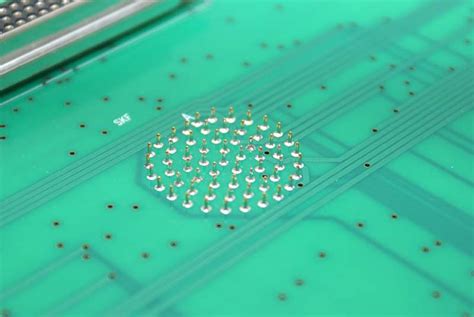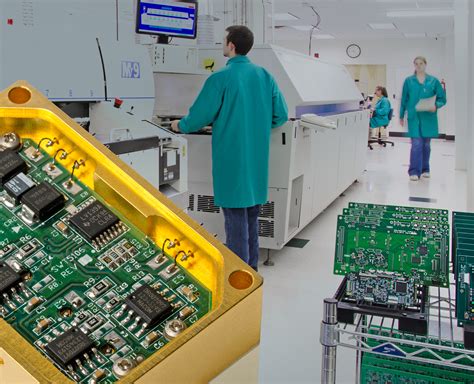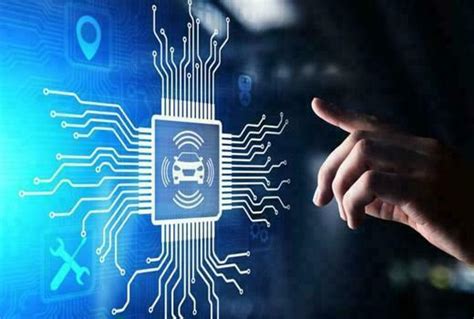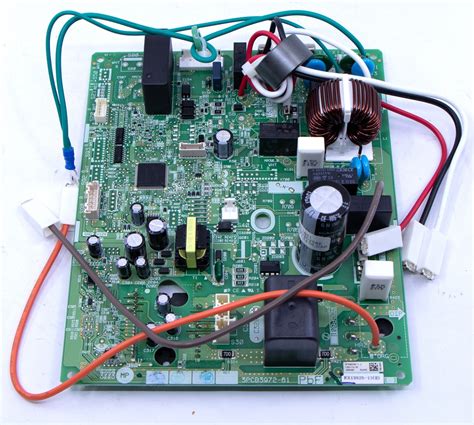Mastering the Art of PCB Assembly: A Comprehensive Guide to Precision and Innovation
Key Takeaways
In the realm of pcb assembly, understanding the fundamental principles is essential to mastering this intricate art. The process incorporates various stages that demand precision and a keen eye for detail. From preparing the circuit boards to installing components and conducting thorough inspections, each step contributes significantly to the overall quality of the finished product. Utilizing high-quality tools and equipment is paramount in achieving a seamless pcba experience, as it ensures components are integrated correctly and efficiently.
Moreover, implementing advanced techniques can significantly enhance precision in pcb assembly processes. Techniques such as surface mount technology (SMT) and through-hole technology are pivotal for modern production methods. However, these advancements also introduce common challenges, including alignment issues and soldering defects, necessitating effective strategies for resolution.
Emphasizing workflow optimization can lead to increased efficiency—an imperative factor in meeting tight deadlines while maintaining high standards of craftsmanship. As innovations continue to shape the future of pcb assembly, staying informed about emerging trends can provide a competitive edge in this dynamic field. All these aspects collectively underscore that successful pcb assembly is not simply about following a set of procedures; it’s about elevating production into a blend of science and artistry, where each board represents an amalgamation of creativity, precision, and innovation.
Understanding the Basics of PCB Assembly
In the realm of PCB assembly (often referred to as PCBA), it’s crucial to grasp the foundational concepts that underpin this sophisticated process. At its core, PCB assembly involves integrating electronic components onto a printed circuit board, which serves as a pivotal backbone for electronic devices. Understanding the layout and functionalities of the components—such as resistors, capacitors, and integrated circuits—is essential for ensuring seamless operation and minimizing potential issues.
Printed circuit boards come in various designs and complexities, which can significantly influence the approach taken during assembly. For instance, single-sided versus double-sided boards can require different techniques and equipment. A fundamental understanding of these variations can drastically improve both efficiency and effectiveness in PCB assembly.
“The secret to mastering PCB assembly lies in comprehending every aspect of the circuit board and its components.”
When engaged in PCBA, familiarity with soldering techniques—both manual and automated—is vital. Additionally, knowledge of proper placement methods can mitigate errors that often occur during assembly, thereby ensuring precision. After all, achieving high-quality results is what distinguishes a proficient PCB assembler from an amateur.
Here’s a simple overview table to highlight key terms related to PCB assembly:
| Term | Description |
|---|---|
| PCB | Printed Circuit Board at its core, where components are mounted. |
| PCBA | Process of assembling components onto a PCB. |
| Soldering | Technique applied to join electronic components securely on a PCB. |
| Integrated Circuit | A compact set of electronic circuits on one chip used in PCBs. |
In conclusion, mastering the basics of PCB assembly not only improves production quality but also fosters innovation within this dynamic sector. By developing an intimate understanding of these fundamentals, individuals can elevate their capacity for precision and efficiency in their projects.
Essential Tools and Equipment for Effective PCB Assembly
In the realm of PCB assembly (or PCBA), having the right tools and equipment is paramount to achieving efficiency and precision. The first essential item is a soldering iron, which enables the skilled technician to create robust electrical connections on the printed circuit board. Accompanying this tool, a quality solder paste stencil ensures uniform application of solder, critical for reliable connections. Additionally, a pick-and-place machine is often employed to automate the positioning of components on the PCB, significantly enhancing speed and accuracy during production. For effective inspections, microscopes or specialized vision systems are indispensable for checking solder joints and component placements with remarkable precision. To keep everything organized, a good workspace setup with anti-static mats and racks helps prevent any damage to sensitive components while ensuring that tools are easily accessible. Lastly, programmable reflow ovens are crucial in heating solder paste evenly to create strong bonds between components and the board itself. By utilizing these essential tools and equipment in your PCB assembly process, you lay a solid foundation for innovative practices that can elevate your projects from merely functional to exemplary in design and reliability.
Step-by-Step Process for Assembling Printed Circuit Boards
The pcb assembly process involves a systematic approach to ensure that each component is correctly placed and soldered onto the printed circuit board (PCB). It begins with the design review, where engineers analyze the specifications and layout of the PCB to identify any potential issues before assembly begins. Once the design is confirmed, the next step is to gather all necessary components, which may include resistors, capacitors, and other electronic parts, ensuring they meet quality standards.
Afterward, solder paste application is performed, where a specialized stencil helps apply solder paste precisely on designated pads where components will be placed. Following this, the pick-and-place machine comes into action, accurately positioning each component on the board according to the design file. This machine ensures high accuracy and efficiency in handling multiple components.
Once components are placed, reflow soldering is executed. This critical step involves heating the board in a controlled environment to melt the solder paste, forming strong electrical connections between components and pads once cooled. After cooling, it’s important to conduct a thorough inspection with techniques such as automated optical inspection (AOI) or manual checks for any misaligned or faulty connections.
Finally, additional processes like insulation and encapsulation might be employed for protecting delicate components from environmental factors. Each phase of this meticulous process contributes to achieving high-quality pcba, ensuring that technological devices function as intended while enhancing reliability and innovation in electronic design. By mastering these steps of assembly, professionals can produce effective solutions in diverse applications and industries.
Techniques for Achieving Precision in PCB Production
Achieving precision in PCB assembly is paramount for ensuring functionality and reliability in electronic devices. One of the fundamental techniques involves meticulous design verification, where the printed circuit board’s layout is systematically checked against the design specifications to catch any discrepancies before assembly. Utilizing advanced pick-and-place machines is another critical method that allows for accurate component placement, significantly minimizing the risk of human error. In addition, employing a robust soldering technique, such as reflow soldering or wave soldering, ensures strong electrical connections while preventing excess solder that could cause bridging between pins. It’s also essential to implement consistent testing procedures throughout the assembly stages, including optical inspection and automated testing systems, to identify and rectify potential defects early in the process. Furthermore, keeping your work environment organized can create a streamlined flow during production; ensuring tools and components are readily accessible helps maintain focus on quality during each phase of PCBA. Cultivating a culture of continuous improvement through feedback loops can also foster innovation in techniques used for achieving precision, allowing teams to adapt to new challenges swiftly as technologies evolve in this fast-paced industry.
Common Challenges in PCB Assembly and How to Overcome Them
In the dynamic field of pcb assembly, professionals often encounter a range of common challenges that can adversely affect the quality and efficiency of the printed circuit board production process. One significant issue is component misalignment, which can lead to faulty connections and non-functional circuits; this challenge can be addressed by ensuring proper setup of automated assembly machines and incorporating precise alignment fixtures. Another prevalent problem is the presence of solder defects, such as cold solder joints or bridging, which can compromise the integrity of a PCBA. To minimize these defects, manufacturers should adopt stringent quality control measures, including regular inspection of soldering techniques and employing advanced soldering equipment.
Additionally, managing inventory effectively poses its own set of challenges in pcb assembly. Stockouts or excess inventory can disrupt production schedules, leading to delays or increased waste. This issue can be tackled by implementing robust inventory management systems that track material usage and supply levels in real-time. Moreover, as the industry embraces innovations in technology, adapting to new assembly methods and materials presents another hurdle; however, continuous training and development programs for teams can ensure that employees remain adept at navigating these changes.
By proactively addressing these common challenges through strategic planning, ongoing education, and leveraging new technologies, professionals can enhance their PCB assembly processes significantly. Success in this field hinges on not just overcoming obstacles but also transforming them into opportunities for growth and improvement within an ever-evolving industry landscape.
Optimizing Workflows: Strategies for Increased Efficiency
In the realm of pcb assembly, optimizing workflows is essential for achieving not only efficiency but also top-notch quality in the production process. One effective strategy is to implement lean manufacturing principles, which focus on minimizing waste while maximizing productivity. This can be achieved by streamlining operations, from material handling to assembly techniques, ensuring that every step in the pcba process adds value. Additionally, utilizing automation tools can significantly enhance precision and speed during assembly, reducing human error and freeing up skilled workers for more critical tasks. Regularly reviewing and adjusting workflow processes based on performance metrics is crucial; this allows teams to identify bottlenecks and implement corrective measures promptly. Moreover, fostering a culture of continuous improvement among team members encourages innovative solutions that can further optimize efficiency. Integrating feedback loops into training sessions ensures that everyone is aligned with best practices, making it easier to adapt to advancements in technology and market demands. Ultimately, a well-optimized workflow in pcb assembly not only accelerates production but also enhances the quality of the final product, solidifying a company’s reputation in a competitive industry.
Innovations in PCB Assembly: Trends Shaping the Future
The world of PCB assembly is undergoing rapid transformation, driven by technological advancements and the increasing demand for higher efficiency and precision. One of the most notable trends is the integration of automation and robotics into the PCBA process. These innovations streamline production, reduce human error, and significantly enhance accuracy in component placement. Additionally, advanced software solutions are emerging that utilize artificial intelligence to optimize design processes, allowing for real-time adjustments that improve throughput.
Another significant trend is the growing adoption of flexible and printed electronics, which offer new possibilities in terms of form factor and functionality. This evolution is encouraging manufacturers to rethink traditional pcb assembly methods to accommodate these innovations seamlessly. Furthermore, sustainable practices are gaining traction; companies are increasingly focusing on eco-friendly materials and processes that minimize waste without compromising quality.
As the industry progresses, embracing these technological advancements will be crucial for staying competitive. By understanding current trends, professionals involved in PCB assembly can better anticipate future challenges and opportunities, ensuring their practices remain at the forefront of innovation in this dynamic field.
Mastering Quality Control in PCB Assembly Processes
In the realm of PCB assembly or PCBA, ensuring the highest standards of quality control is paramount. Quality control processes serve as the backbone for achieving optimal results in any assembly project. One of the core components involves systematic inspections and testing at various stages of the assembly process. This includes both visual inspections and functional testing to confirm that each printed circuit board meets predefined specifications before moving forward.
Implementing robust quality assurance protocols can significantly reduce defects and enhance the reliability of electronic components. Among these protocols, automated optical inspection (AOI) plays a crucial role, providing rapid and accurate detection of potential issues that might escape manual audits. Furthermore, maintaining a culture of continuous improvement through regular training and feedback helps teams stay current with best practices and emerging technologies in PCB assembly.
Effective documentation is another critical facet; it helps teams trace issues back to specific processes or components, ensuring that root causes can be identified and addressed swiftly. Moreover, establishing comprehensive benchmark metrics allows for accurate assessment and comparison across multiple projects. This continuous monitoring not only ensures precision but also drives innovation as organizations adapt to new challenges in PCBA technology.
Ultimately, focusing on quality control within the PCB assembly processes not only bolsters product integrity but also instills a sense of confidence in clients, fostering long-term business relationships based on trust and reliability. By mastering these quality control techniques, companies can elevate their PCBA operations from mere production tasks to refined art forms, embodying both precision and innovation at every stage.
Conclusion
In summary, the process of pcb assembly is both a delicate art and a scientific endeavor that requires a keen understanding of techniques, tools, and methodologies. By implementing the strategies discussed throughout this guide, professionals and enthusiasts alike can enhance their proficiency in pcba. As the industry continues to evolve, adapting to new technologies and trends is essential for maintaining competitive advantage. Moreover, as we tackle common challenges such as misalignment or component placement errors, mastering these processes will ultimately lead to improved results in terms of functionality and reliability. As you embark on your journey in pcb assembly, remember that every project is an opportunity to innovate and push the boundaries of what is possible in electronic design. With diligence and creativity, the intricate world of pcb assembly can not only yield effective results but also transform into an inspiring art form that showcases both precision and innovation.
FAQs
When delving into PCB assembly, various questions often arise, highlighting the complexity and nuance of the process. One common inquiry relates to the differences between PCB assembly and PCBA. While they may seem interchangeable, PCB assembly refers to the entire process of soldering components onto a printed circuit board, whereas PCBA denotes the fully assembled board ready for integration into electronic devices. Another frequently asked question is about the essential tools needed for efficient PCB assembly. Key items include soldering stations, pick-and-place machines, and inspection tools that ensure quality and precision throughout the production stages.
Additionally, many look for clarity on common challenges encountered during PCB assembly. Issues such as misalignment of components or improper soldering techniques can lead to defects in PCBA, ultimately affecting performance and reliability. Understanding these pitfalls is crucial for both newcomers and seasoned professionals alike.
One must also consider how new advancements are influencing methods of PCB assembly. Technologies such as automated optical inspection (AOI) and machine learning algorithms are now being integrated into workflows to enhance precision and speed. These innovations not only streamline production but also ensure that the final product adheres to strict quality standards.
To stay updated on effective practices in PCB assembly, including troubleshooting tips and industry trends, please explore further insights at our dedicated page:
Explore more about PCB Assembly!
By remaining informed, you can navigate the evolving landscape of electronic manufacturing with greater confidence.







